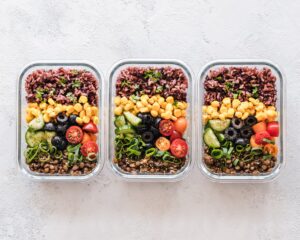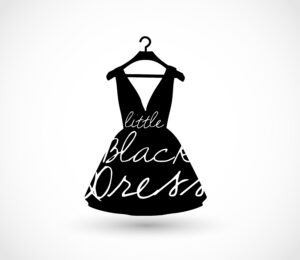Do you drink smoothies for breakfast and/or eat salads for lunch? Do you often feel tired and run-down for no obvious reason? Are you always freezing?
If any of this sounds familiar , you may want to rethink the approach after reading my experience with Chinese medicine’s “warm” food diet. This is the primary way to treat a common condition that Chinese medicine has labeled as a “Spleen Qi deficiency.”
You may be thinking, I don’t even know where my spleen is, let alone that it has any kind of deficiency, but it’s really more about a blockage in energy. The practices used to unblock that energy have made a huge difference in my physical and mental sense of well-being, so I am writing this to share what I learned and how you can adapt some of your habits to feel more pep.
The Chinese Medicine (TCM) Approach to the body
In Chinese medicine, the body is like a furnace, and the ‘qi’ is like the fire that keeps the energy burning. There are certain “warming” foods capable of keeping this energy moving. Cold, raw, foods overstress the organs and can cause Spleen Qi deficiency. For this reason, Chinese traditional cuisine is heavy on soups, stews, and lean meats. In fact, until the 1990s, you couldn’t even order a salad at a Chinese restaurant; the inclusion of salads was only in response to an increasing presence of Westerners and this dietary staple that they brought along.
We’ll explore the warm food/cold food model further below in a discussion of how to treat Spleen Qi deficiency. First, we’ll look at what it is, what the causes and symptoms are.
What is Spleen Qi deficiency?
Understanding the importance of the spleen
The least appreciated organ – the Spleen – is what is responsible for keeping us protected from deadly viruses and bacteria. If we get cut accidentally, the spleen generates reserves in our blood so we don’t bleed to death. But the spleen’s primary role is like an air traffic controller for all of our red blood cells, which give our other organs and muscles all their energy. It filters out the bad and useless cells, and shuttles the good ones to where they need to go. So if there’s a clog in the machinery of this command center, a few things can happen. First, we will find ourselves getting sick more often. Second, we’ll have this unexplained malaise and lack of energy. The slowdown in the filtration and direction of blood cells is also known as blood stagnation, which is a common condition associated with spleen qi deficiency.
Spleen qi deficiency : causes and symptoms
Although it sounds esoteric, spleen qi deficiency is quite common. If you are a busy person in this stressful world, you probably have at least a mild case of it. The Qi in the body is responsive to overexertion and high levels of stress, whether physical or emotional. Basically, any excess level of strain on the body, whether it’s physical or emotional, can cause spleen qi deficiency. Overthinking, worrying, or feeling anxious can lead to mental strain and harm Spleen Qi. This condition is exacerbated by consuming cold or raw foods and drinks, skipping meals, not eating enough, or overeating.
What are some symptoms?
Common symptoms of Spleen Qi deficiency include:
- Digestive issues
- Anemia
- Anxiety
- Dry skin or brittle hair
- Muscle aches and weakness
- Weight problems
- Mental fog
- Chronic fatigue
- Emotional exhaustion.
But how can you really tell if you have this condition? Just like with Western ailments, visiting a doctor practicing in Chinese medicine and acupuncture is key. I have been getting acupuncture for 3 years now. The treatments inside and outside of the office have completely changed my body from the inside.The most significant changes that made a difference were changes to my diet.
Spleen Qi is often accompanied by “dampness”, which is described as a feeling of heaviness in the body or the head.
Who can diagnose Spleen Qi deficiency?
The role of Chinese medicine practitioners and acupuncture
If you have ever tried acupuncture, you know the first thing that happens after getting your full history is the practitioner asks to look at your tongue. By looking under your tongue at the veins, the practitioner can tell if you have blood stagnation (i.e., an impairment in blood flow caused by Spleen Qi deficiency). That’s exactly what happened on my first visit with Artin. He immediately identified stagnation and put me on a treatment plan to stimulate blood flow. This included acupuncture and cupping (which also enhances circulation).
Incidentally, acupuncture also is associated with better weight control and a lower BMI. Many insurance plans actually cover up to 90 percent of the cost.
TCM approach to food
To understand the treatment of spleen qi deficiency, you first need to understand the TCM medicine view of the digestive system. The body has a “metabolic fire” that acts like a furnace, which is fueled by the food we consume. Warm food is the best way to keep the metabolic fire burning and extract the nutrients. Cold, raw foods, in contrast, place extra stress on the digestive system because of work needed to break down all the food into the stomach. This extra work tires out the body and places additional stress on the organs, including the spleen.
What foods to consume
- Proteins – Chicken, beef, lamb, wild game (e.g., venison or bison), mackerel, tuna, trout, salmon, shrimp, lobster, chickpeas, black beans, kidney peans, fava beans
- Vegetables (always cooked) – Pumpkin, sweet potatoes, cabbage, squash, carrots, corn, yams, peas, onions, leeks, garlic, mushrooms,
- Fruits – Apples, apricots, dates, figs, sweet cherries, peach, plums, red grapes, dried fruit such as raisins, dates, and figs
- Dairy – TCM recommends avoiding cow’s milk in favor or sheep or goat, if animal protein milk is preferred.
- Grains – amaranth, oats, millet, polenta, rice, basically any whole grain
- Nuts and seeds- walnuts, pumpkin seeds, almonds, walnuts, sunflower seeds
- Condiments: olive oil, flaxseed oil, honey, almond butter, maple syrup, barley malt, raw honey, raisins, molasses, raw cane sugar
- Spices- black pepper,cinnamon, nutmeg, fennel, aniseed, fennel, ginger, cardamom, nutmeg, vanilla
- Beverages – green or jasmin tea, peppermint tea

What foods to limit
The list can depend on what site you visit, and some have odd prohibitions – like nut butter. But I gathered the “common denominator” foods and will list them here:
- Very oily and fatty foods (e.g., margarine, cured meats)
- Alcohol,
- Refined sugars and grains
- Raw vegetables
- Cold salads
- Cold fruits
- Cold drinks
- Smoothies, frozen yogurt, ice cream
Note this says REFINED sugar, not NO sugar. Molasses, honey, raw cane or coconut sugar is generally acceptable.
How to make the TCM approach work in a Western diet
This doesn’t mean never eat sushi or ice cream again. After all, I follow the DAO 80/20 approach. So while I do try to make the TCM approach my core nutritional plan, I certainly have the foods I crave 20 percent of the time, and if that includes ice cream, then that is what I will have.
These are guidelines, not a “black list” and a “white list”.
But there are some adjustments you can make that are helpful in keeping the metabolic fire active and the Spleen Qi at bay,
- Room temp water and fruit – Room temp water helps break down food in your system faster. It also improves circulation and is less likely to cause you a headache than cold water. If you get sinuses or stuffy, your water temp being cold may also be to blame, because it thickens your mucus membranes. While cold fruit isn’t recommended by TCM approach, this can be mitigated by keeping fruit at room temp. In fact, Western culture has conditioned us to unnecessarily keep a lot of foods in the fridge. My Italian friends think Americans are nuts for keeping butter in the fridge. Most fruit is meant to be eaten within a few days, so keeping oranges, apples, stone fruits, bananas, and berries on the counter is perfectly fine. Oh, and you should never refrigerate tomatoes or avocados – it will totally suck out the flavor. This is all straight advice from farmers!
- Have an otherwise cold meal with something warm. As you may notice, the Japanese often accompany sushi with miso soup and green tea. You can do the same soup/tea combo with your regular salad. Or warm up the protein and grain, so that the salad becomes more of a warm bowl with some cool elements. I typically set greens out about an hour before I eat them, so they get warmed to room temp. If you want some ice cream, consider also having a decaf coffee or herbal tea.
- Have a cold drink with a warming food – for example, if you want ice coffee or iced tea, have it with some eggs. If you are not that hungry, have some dried fruit, like dates, to take the edge off the coldness. If you love juicing or paying 10 dollars for a fresh veggie juice, make sure to ask for some ginger because that has a counteracting warming property.
As you can see, I have given this a lot of thought! But it has benefitted me from the inside and out. Try this approach and see if it works for you – you have nothing to lose !
Try this “warm cool” salad
You don’t have to give up your big salads for lunch! Just add some warm components – rice, beans, quinoa, noodles, vegetables.
For a warm-cool salad – Thai green papaya salad with shrimp udon noodles (warm the shrimp and udon noodles to balance)
This is based on a traditional recipe for the salad from Epicurious, and I added the udon noodles and shrimp to make it “warm.”
https://www.epicurious.com/recipes/food/views/thai-green-papaya-salad-358495
MAKES 6 SERVINGS
Ingredients
- 5 tablespoons fresh lime juice
- 3 tablespoons (packed) palm sugar or golden brown sugar
- 2 tablespoons plus 2 teaspoons fish sauce
- 2 tablespoons dried shrimp, chopped
- 4 garlic cloves, minced
- 3 Chinese long beans, halved crosswise or 15 green beans
- 1 1/2- to 13/4-pound green papaya, peeled, halved, seeded (or you can use zucchini noodles)
- 10 large cherry tomatoes, halved
- 1 cup chopped fresh cilantro
- 2 green onions, very thinly sliced
- 1 fresh red Thai chile with seeds, thinly sliced
- 2 tablespoons coarsely chopped salted peanuts
- Japanese Udon nooodles
- Shrimp
Method :
Step 1
Whisk first 5 ingredients in a medium bowl. Set dressing aside.
Step 2
Defrost frozen green breans and shrimp and cook in a large saucepan with sesame oil. At the same time, boil udon noodles for 3 minutes. Place in large bowl. Add tomatoes, cilantro, green onions, chile, and green beans. Pour dressing over; toss. Sprinkle peanuts over and serve.
More recipes for spleen Qi health can be found on my DAO recipes page.
More reading:
A Chinese Medicine approach to food: Skip the cold salads (DAOFitLabs)
Foods to strengthen the spleen and beat fatigue (Jade Spring)






